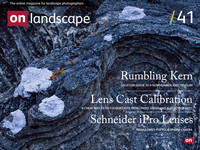Featured Photographer

Tim Parkin
Amateur Photographer who plays with big cameras and film when in between digital photographs.
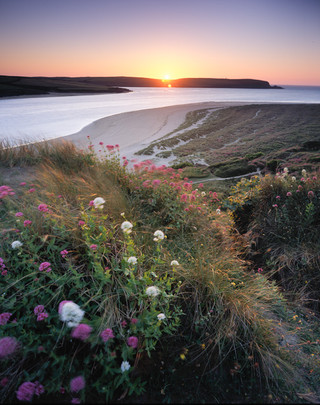 In most photographers lives there are 'epiphanic’ moments where things become clear, or new directions are formed. What were your two main moments and how did they change your photography?
In most photographers lives there are 'epiphanic’ moments where things become clear, or new directions are formed. What were your two main moments and how did they change your photography?
It's difficult to say about epiphanies - they never quite seem it at the time but I suppose the first was probably when I went out with my wife on a very early dawn patrol to Brimham Rocks. It was not long after I had bought my Canon 5D and I was determined to get something out of camera. I had been before a couple of times but this morning was full of frost and the smell of potential. We'd arrived early and so a flask of coffee appeared (courtesy of the sherpa). Sitting there on top of the rock when the sun started to colour the horizon was wonderful - a feeling I don't think I'd experienced before. Operating the camera was a distraction but it didn't get in the way like many commentators like to describe. In many ways the operation of the camera was like a form of meditation - a distraction of the thinking part of the brain to allow you to experience what is happening without rationalisation. I was hooked.
My second ‘epiphany’ was a workshop in the Hebrides with David Ward and Richard Childs. The course wasn’t a ‘large format’ course but David Ward, Richard Childs, Melanie Foster and Gerry Gavigan. Gerry was particularly helpful and showed me how the large format camera worked and it was on the next to last day when David showed his large cibachrome prints that I was completely bowled over. I hadn’t seen anything quite as exquisitely beautiful before and it was probably this point more than anything else that convinced me to ‘go’ large format. The particular image was ‘Poverty Flats’. Two months later and both myself and Neil Bryce had bought large format cameras and, for me at least, the pace of learning really shifted up a gear after that.
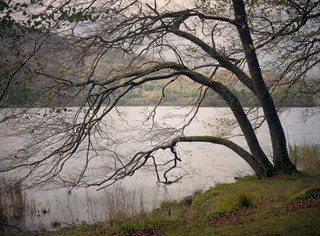 I suppose a little mini-epiphany happened a year or so after this. I had found myself getting stressed out about 'missing the light' - not being out when amazing sunsets or sunsrises happened. At one point I was in the Peak District leading a workshop with Dav Thomas and we had the most amazing light - typically I would have reflexively gone for my camera but because of the course, I just helped other people to capture the event. I discovered that I didn't really enjoy the experience any less having not taken a picture. A week or so later I cocked up some developing and lost a picture that I was looking forward to. Thinking about these two experiences made me realise that the final picture isn't the most important thing in photography. Yes it's great to have that image to share but the pleasure of being out and using a camera, framing a picture and seeing it in your minds eye is a bigger part of the experience. This helped me enjoy photography a lot more.
I suppose a little mini-epiphany happened a year or so after this. I had found myself getting stressed out about 'missing the light' - not being out when amazing sunsets or sunsrises happened. At one point I was in the Peak District leading a workshop with Dav Thomas and we had the most amazing light - typically I would have reflexively gone for my camera but because of the course, I just helped other people to capture the event. I discovered that I didn't really enjoy the experience any less having not taken a picture. A week or so later I cocked up some developing and lost a picture that I was looking forward to. Thinking about these two experiences made me realise that the final picture isn't the most important thing in photography. Yes it's great to have that image to share but the pleasure of being out and using a camera, framing a picture and seeing it in your minds eye is a bigger part of the experience. This helped me enjoy photography a lot more.
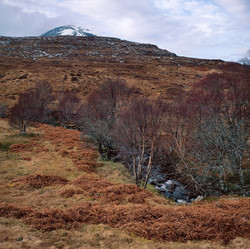 Tell me about why you love landscape photography? A little background on what your first passions were, what you studied and what job you ended up doing.
Tell me about why you love landscape photography? A little background on what your first passions were, what you studied and what job you ended up doing.
My interest in photography arrived first when I was about 12 or 13 and I received a Zenit E camera for my birthday after paying interest in a cousin’s camera. I was just shooting anything I could find until our neighbours who ran the local camera club took me under their wing and pointed me at ‘interesting stuff’ in this case this meant parks, bridges, buildings etc. I won a few competitions and upgraded to a Minolta XD5 but the hobby disappeared when I had to choose between buying a BBC computer or keeping the cameras. The computer won and my career followed.
When I first went to university to study electrical engineering I also went walking in the Lake District with friends and spent a couple of holidays with a borrowed camera but the following years were camera free. I worked in engineering for GEC research and then continued to study a PhD in computational mathematics at Aberdeen and then Manchester university.
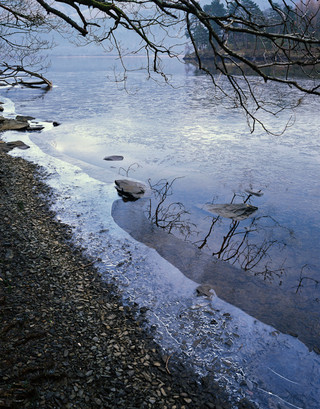 My passion was music at that point and I played guitar in a few bands and also ran a music listings magazine and helped edit the university magazine. This lead to me getting a part time job working a A&R for U2’s record label (Mother Records) which had me covering the north of the country looking for acts (I managed to ‘find’ the Stereophonics, Mansun, Gomez, Travis and Badly Drawn Boy but my boss was never convinced - he did infamously turn down Radiohead because they looked geeky!)
My passion was music at that point and I played guitar in a few bands and also ran a music listings magazine and helped edit the university magazine. This lead to me getting a part time job working a A&R for U2’s record label (Mother Records) which had me covering the north of the country looking for acts (I managed to ‘find’ the Stereophonics, Mansun, Gomez, Travis and Badly Drawn Boy but my boss was never convinced - he did infamously turn down Radiohead because they looked geeky!)
At this point I had a bit of a catastrophe and suffered damage to my back as a result of a fall. This stopped my ‘normal’ work in it’s tracks and an enforced 24 months of recuperation where I could do very little and then another 12 months getting back ‘on my feet’. During this time I taught myself many of the skills needed to develop websites - server programming, html/javascript and finally, and pertinently to this, graphic design. I had looked into graphic design a few times previously, designing brochures for the engineering company I worked for and the listings magazine but this time I spent a long while looking at what made good and bad designs. In the process I went from being a terrible designer to being vaguely passable.
I was back into work for various web companies and finally started my own open source software consultancy, specialising in web applications. At the same time my new physiotherapist suggested I should get out walking more in the countryside as it has been proven to be one of the best types of exercise for back problems (walking on uneven ground). Now, not being the most patient sort and being a bit ‘goal driven’ I figured I would be more likely to spend time outdoors if I had a ‘task’ and photography seemed the obvious one. A tax rebate afforded the opportunity and a 20D was in my hands. From that point it was a series of small enlightenments until I was bought a Joe Cornish book (First Light), a Jack Dykinga book (Large Format Nature Photography) and a couple of years later an Andrew Nadolski book (End of the Land). These books showed me a range of approaches and techniques that kept me busy for some time.
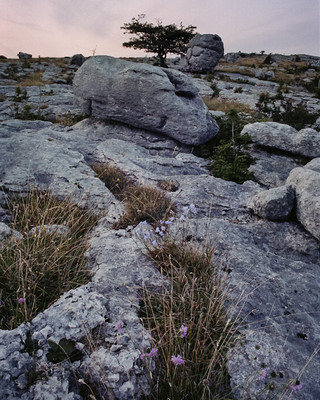 The next biggest events in my development were working with Joe, which started when I met him on a workshop in Gower and developed further over time until I raised the possibility of this magazine. Without going into too much boring detail, the development of the magazine has been one of my fastest learning curves. Looking at other photographers, old and new, and talking to David, Joe and others about what photography means has stretched my understanding dramatically (and it often feels like it!).
The next biggest events in my development were working with Joe, which started when I met him on a workshop in Gower and developed further over time until I raised the possibility of this magazine. Without going into too much boring detail, the development of the magazine has been one of my fastest learning curves. Looking at other photographers, old and new, and talking to David, Joe and others about what photography means has stretched my understanding dramatically (and it often feels like it!).
I now spend some of my time working on the magazine, some running a professional drum scanning service, some shooting groups on large format (mostly Army work) and some acting as internet consultant and developer for my wifes business.
The amount of time I spend going out has dropped dramatically because of this, a situation I plan to resolve once a big internal project for the magazine is finished.
Internal project?
Yes, ssshhh!!
There are many suggested links between maths, music and art - mostly around pattern recognition, simplicity, etc. Do you see anything like this in your work?
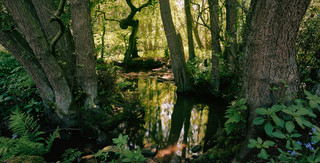 Yes, definitely! The relationship between music and maths is well known and is a result of the two being very complementary. Higher level maths and engineering often relies on the ability to see and test patterns - these might be mathematical formulae, patterns of magnetic field flow, arrangements of mechanical structures - and to visualise how these patterns ill come together. Music is often the same thing, understanding how keys, harmonies, dissonance and progression all combine to create a flow is critical. There is also the heuristic ‘suck it and see’ approach to maths and music whereby conjectures are proposed, analysed and kept or thrown away. Composition seems to have many similarities to these. Analysing the compositional flow of classic images and finding patterns that repeat throughout many images helps to create a visual ‘grammar’ which you can take out into the field and try to match with reality. Moving about to find alignments, correspondences and symmetries is a form of puzzle solving in itself - I know a few people who talk of it like a 3D game of tetris, seeing how shapes and textures can create synonyms and anyonyms in nature.
Yes, definitely! The relationship between music and maths is well known and is a result of the two being very complementary. Higher level maths and engineering often relies on the ability to see and test patterns - these might be mathematical formulae, patterns of magnetic field flow, arrangements of mechanical structures - and to visualise how these patterns ill come together. Music is often the same thing, understanding how keys, harmonies, dissonance and progression all combine to create a flow is critical. There is also the heuristic ‘suck it and see’ approach to maths and music whereby conjectures are proposed, analysed and kept or thrown away. Composition seems to have many similarities to these. Analysing the compositional flow of classic images and finding patterns that repeat throughout many images helps to create a visual ‘grammar’ which you can take out into the field and try to match with reality. Moving about to find alignments, correspondences and symmetries is a form of puzzle solving in itself - I know a few people who talk of it like a 3D game of tetris, seeing how shapes and textures can create synonyms and anyonyms in nature.
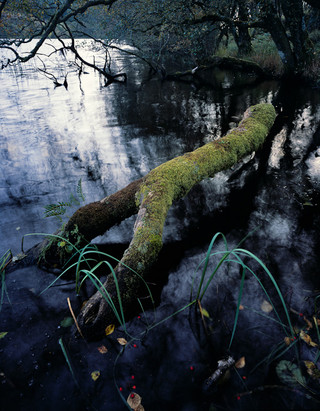 The interesting thing is that once you start to relate to these patterns, you can start to play games with them - at my stage in photography (still very early I think) I like to see how visual grammar can be stretched and distorted to create different interpretations of an image (I don’t mean interpretations as in ‘This image means blah, blah’ I mean the way in which an image is ‘read’ - the way an eye progresses which can then reprioritise different parts of an image.
The interesting thing is that once you start to relate to these patterns, you can start to play games with them - at my stage in photography (still very early I think) I like to see how visual grammar can be stretched and distorted to create different interpretations of an image (I don’t mean interpretations as in ‘This image means blah, blah’ I mean the way in which an image is ‘read’ - the way an eye progresses which can then reprioritise different parts of an image.
Could you tell us a little about the cameras and lenses you typically take on a trip and how they affect your photography
Hmm... difficult as I seem to have become more of a camera collector than a photographer recently. Mostly I take out either my Ebony 45SU with a full set of lenses (58,75,110,150,200,240,300,360,500) which would then get ‘subdivided’ if I was going to walk any distance or a small set of lenses (110,200,300) and possibly my much lighter Chamonix 45N-1 if I was going to walk a long way. I’ve also just bought a Sony A900 with a bunch of tilt lenses and a 12-24 and 28-135mm lens which I might take out as a visual ‘sketching’ tool.
I also have an 8x10 camera that I’m hoping to use more with ‘old’ lenses and a few medium formats and 35mm cameras (Mamiya 7, Mamiya C220, Mamiya 645, Rollei SL66, Olympus OM1 & Canon A1). The Mamiya 7 is a great walkabout camera and the C220 with older lenses makes an absolutely stunning portrait camera. The Rollei is new but I’m hoping to take Twin Lens Life (http://www.twinlenslife.com/) as my inspiration and get some ‘swirly’ background shots of the family and some landscapes too. Oh, I have a few digital cameras too; Sony A900, 2xPanasonic GH1s (mostly for video) an LX5 and a Go Pro Hero..
Deciding what to take out is the big issue though, every one is a compromise in different ways :-)
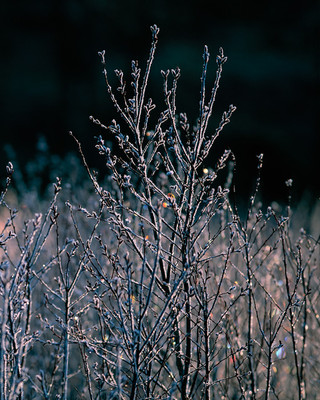 What sort of post processing do you undertake on your pictures? Give me an idea of your workflow..
What sort of post processing do you undertake on your pictures? Give me an idea of your workflow..
With film it’s mostly down to getting a great scan and once I saw the results from a drum scanner that a colleague had I knew I had to get one. I spent a few bob on a good colour target for the drum scanner to get as accurate results from my film as possible (Hutch colour target, £300+ for a single 6x7 shot. The most valuable image I own - sadly).
I used to think that apart from lifting a few shadows, the work was then done. However, after working with Joe and seeing his skill in ‘revealing’ images using post processing and also the ‘open’ interpretation needed when inverting colour negative film, I am a lot less reverent than I used to be. Pretty much anything goes apart from a personal adherence to retaining a documentary link with the original subject (I don’t mind distorting an interpretation but not the global facts of a picture).
The only plugins I regularly use are for sharpening and noise reduction and after much research I settled on Photokit Sharpener and Imagenomic’s Noiseware noise reduction plugin. However, I have played with Alien Skin’s Exposure and Nik’s Silver EFX Pro 2, both of which work really well at what they do an can provide some great inspiration (they’re also good at simulating grain - if you’re that way inclined).
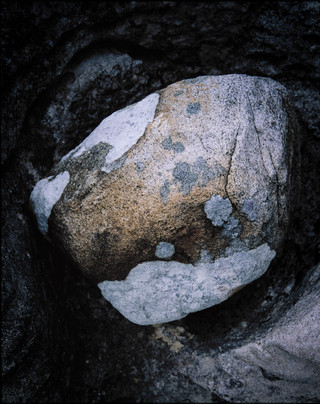 Tell me about the photographers that inspire you most. What books stimulated your interest in photograpy and who drove you forward, directly or indirectly, as you developed?
Tell me about the photographers that inspire you most. What books stimulated your interest in photograpy and who drove you forward, directly or indirectly, as you developed?
Tough one. I would have to say that I would have answered Shinzo Maeda and bits of Carr Clifton but I’ve started to like some quite different work recently. Brett Weston has been my latest fad but I’m always surprised by the quality of some of the work from contacts on flickr. Paul Mitchell, Paul Moon, Al Brydon, Alistair Ross, David Langan, Guy Sargeant, Chris Goddard, Simon Harrison, Andrew Keartona, Mike Green, Joe Wright, Pete Hyde, Richard Childs, Ross Brown, Alistair Haimes, Julian Barkway, Paul Morton, Doug Chinnery, Tim Smalley, and many, many more.. (sorry if I haven’t mentioned you!) and that is only on Flickr. They regularly produce good images and occasionally produce great ones - it’s quite humbling really. And that is ignoring international photographers such as Michael Gordon, Mike Stacey, Lon Overacker, Roman Loranc, Chip Hooper, Keith Taylor, etc..
I suppose the photographers who particularly inspired me in terms of composition and approach to photography were originally Joe and David. However, as time went on I became more attracted to images such as Andrew Nadolski’s - his book was a revelation about how to express an appreciation of the landscape. The most recent inspiration has been coming from more ‘contemporary’ landscape photographers - obviously Burtynsky but less obviously Joel Sternfeld, Jem Southam, Richard Misrach and Dalton Rooney. They may not all be instantly attractive but there are qualities about each I admire and want to include in my own work.
Tell me what your favourite two or three photographs are and a little bit about them.
I get bored of my own images quite quickly so my favourite change over time. The following contain two ‘current’ favourites and one of the images that I think I was successful in achieving my goals with (which is what successful means to me I suppose). These may not be ‘popular’ but I have enjoyed coming back to them.
Castle Crag
Great name and a great place. This was taken on a holiday with my wife and the conditions were wet and cold which was unpromising at first but became fantastic as it matched the mood later on. This is a variation on the image in my website galleries, a slightly tighter crop and some dodging and burning.
White Oak
[portfolio_slideshow include="9849,9848" showcaps=true navpos=disabled size=large order=ASC]
Something of a revelation to me. I was working under a branch that had fallen into the lake below Hallin Fell, Ullswater. I was noticed that the leaves were very clear where the branch’s reflection shaded the water. I took a shot on velvia to try to capture the effect but had to compromise by waiting for the reflections to get darker. I then took a shot on colour neg (Portra 160) which allowed me to shoot when the reflections were at their brightest. This latter shot acheived exactly what I wanted and the two interpretations made me think a lot about how medium and light transforms an image.
Mellon Udrigle
My tastes in the style and composition have been changing recently and I’ve begun to appreciate some images that I would have through were quite boring a couple of years ago. This image was shot whilst in Scotland shooting Joe’s recent video for Phase One (1, 2, 3).
We had taken a walk down from the beach house we had rented and on the way back I stopped and was looking at the small stone circle on this headland. I wouldn’t have normally taken an image because there was no complementary light, no strong leading lines, almost no subject, but there was enough in the view that had made me stop and spend a little time looking and there was a subtle compositional balance to the image and the colours were interesting. I gave it a go and then forgot about it. Even when I scanned the image I wasn’t sure about it but as I spent more time with it it definitely grew on me and is now one I’m quite proud of.
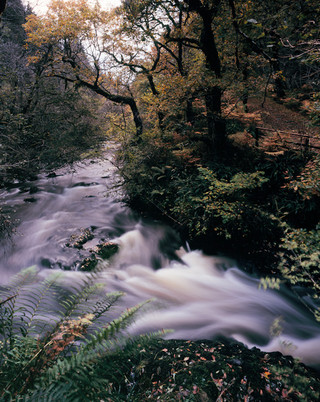 If you were told you couldn’t do anything art/photography related for a week, what would you end up doing (i.e. Do you have a hobby other than photography..)
If you were told you couldn’t do anything art/photography related for a week, what would you end up doing (i.e. Do you have a hobby other than photography..)
Well - I would have said music but my time working for the music industry killed off my passion for listening to music quite thoroughly (listening to 10-20 tapes a day and regularly seeing five bands a day and sometimes up to twelve put paid to that). But making music is different. I don’t find much time at the moment but I love playing fingerstyle guitar and used to get lessons off a very good Leeds guitarist called Jon Gomm (see this and this). I think I’d love to carry on with this an maybe play a little walk in jazz.
What sorts of things do you think might challenge you in the future or do you have any photographs or styles that you want to investigate? Where do you see your photography going in terms of subject and style?
Could be a long answer but I’ll try to summarise. Photography for me is about learning to see and using the camera to see differently. Landscape photography is a result of my love of being out
Who do you think we should feature as our next photographer?
I think you/we should feature Guy Sargent (surprise! We will be! although not next) and then perhaps Phil Malpas or Nigel Clarke. Or maybe Paul Wakefield? Who knows :-)
- Velvia 50
- Portra 160

